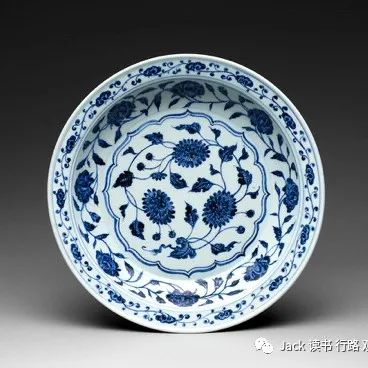Links Between East and West 11 Cultural Symbols 东西方的连接11 - 文化符号
Abstract:
Symbols found in ancient art and design across the world can take people back to the foundations of our culture and see what characterizes each culture’s beliefs, values, and morals. They create the “pulse of cultures”, that pump these beliefs, values, and morals into history forever. Four of the world’s sophisticated cultures – ancient Egypt, the Roman Empire, Hindu India, and ancient China, are perfect examples of the power of symbols in art and design.
People live in a multilayered world. Today, as civilization develops at speed hitherto unseen in human history, new elements of cultures keep piling up, forming the “layers.” Novel trends can render older ones obsolete in a matter of a month or so. But below such superficial and modern layering of our cultures, there lies something deep, vibrant, and vast, something universal that has pumped values, beliefs, and morals into human history. I call this “the pulse of cultures.” The pulse weaved the world’s cultures and has been the foundation for the modern world. What has generated the pulse of cultures? One of the most intriguing yet primary factors is symbols in ancient art design. They were a worldwide phenomenon and have impacted cultural values, beliefs, aesthetics, and many more aspects in unfathomably profound ways. As moderners, by looking at these symbols, one can be taken back to the foundational layer of cultures, and understand what shapes who we are and what we believe in collectively as a culture.

(Cobra amulet)
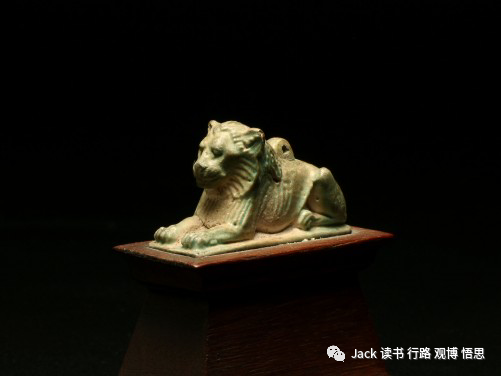
(Lion amulet)

(The scarab beetle)
Ancient Egypt’s symbolism in their art design is an appropriate starting point to investigate how symbols created the pulse of cultures (or, in this case, Egyptian culture) thousands of years ago. The symbols found in many of their artifacts were strongly related to their cultural values and belief system. Take the example of the symbols of animals found on the famous amulets. An amulet is an ornament worn by both the living and deceased to protect against evilness, danger, or disease. In ancient Egypt, during the Old Kingdom Period (~2700-2200 B.C.E.), amulets in the shape of animals usually symbolized different human traits or values. For instance, the cobra represented royal and divine power, and archaeologists discovered this animal on the front of the headdresses of gods and pharaohs. The lion symbolized ferocity and bravery, and historians deduct that the warriors mainly wore the lion amulet. During the Middle Kingdom Period (~2200-1800 B.C.E.), the animals appearing on the amulets typically represented deities. The scarab beetle represented "Ra", the Sun God, for example. And many other animals depicted on the amulets represented various deities, such as Horus, Anubis, and other religious figures. Through the symbols on their decorative and practical ornaments, the ancient Egyptians built an astonishingly vibrant and multilateral culture. However, the symbols not only embodied their culture, but they enlivened it, creating the pulse. Today, although Egypt is not like the Old and Middle Kingdom Periods, when the people see the symbols on the amulets, they are brought down below the layers to its culture’s pulse. They are brought down to the Egyptians’ ancient, fervent yet true love for art, religion, nature, and daily life that is deep, vibrant, vast, and universal, a love that still resonates in this ancient land.

(The Dolphin of Delphi)

(The Imperial Eagle)
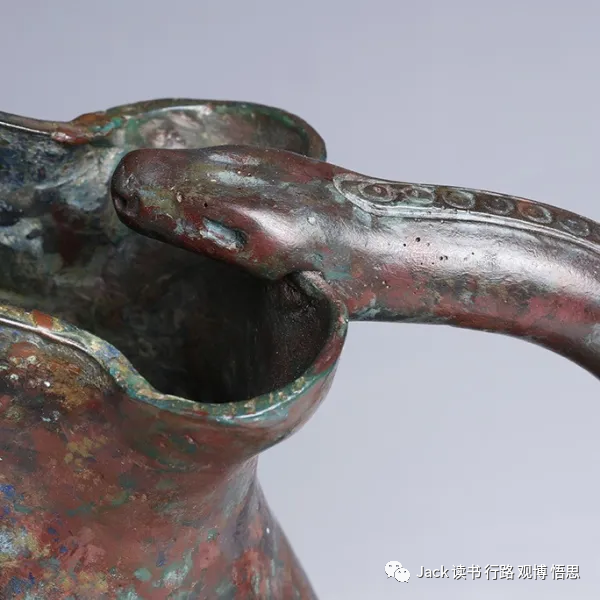
(The Snake of Asclepius)

(Logo of the WHO)
Since every single culture has a pulse, the Romans were no exception. Most individuals remember the Romans for their immense empire and their decline after the Third Century Crisis. However, Roman symbolism in their art and design certainly play an indispensable role in shaping their culture and creating their pulse. Like in ancient Egypt, the Romans were fond of nature and frequently used animal symbolism to represent different aspects of their lives. For example, the dolphin originally symbolized the Oracle at Delphi (the ancient Greeks believed that Apollo, in the form of a dolphin, helped construct the temple at Delphi). However, on a more general level, for the Romans, it epitomized their belief that established a connection between animals and their religion. Besides the dolphin, another animal symbol that frequently appears in Roman art and design is the eagle. The eagle signifies the power and prestige of Imperial Rome and gradually turns into the main symbol of the entire empire. The eagle starts to show up in Roman standards and in other kinds of Roman art. Finally, one of the most famous animal symbolisms created by the Romans is the Snake of Asclepius. In Roman mythology and cultural beliefs, a snake guided Asclepius and discovered the secrets of healing. The snake symbolizes healing and implies good fortune. The Roman Empire was not only flourishing politically and militarily but also culturally. By looking at animal symbolism in Roman art and design, people can feel the cultural pulse that pumps their vibrant cultural characteristics into history and passes them down to today. In the modern world, the American bald eagle, the Snake of Asclepius on the WHO logo, and many other animal symbols continue to hold the same significance and meanings as they did 2000 years ago. By observing these symbols, one can learn about the crucial, primary components of Western cultural values and beliefs.

(The “Shankha” Shell)
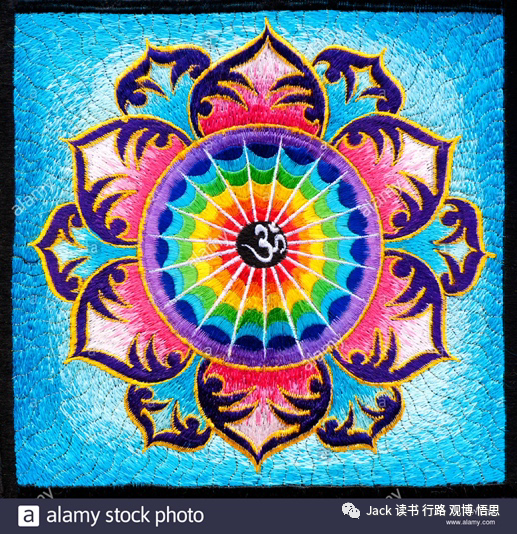
(A lotus pattern that is common in Hindu art)
Since the cultural pulse is universal, it is essential to consider several Asian cultures that have diversified symbols in their cultures. One example is ancient India, where the conch shell has much significance and represents various aspects of the culture there. In Hindu mythology, the Shankha (or the conch shell) is the emblem of the preserver god Vishnu. The Shankha is described as possessing the ability to cleanse the soul of sins and a giver of fame, longevity, and prosperity. Besides the religious representation, the conch shell is also the symbol for water, suggesting a relation with female fertility and the serpent, another frequently depicted creature in traditional Hindu culture. The symbol is additionally believed to treat specific ailments in real life. Alongside the conch shell, various other symbols, including the lotus, crescent-moon, cobra, drum, tiger skin, symbolized different gods and cultural beliefs. Although India has changed a lot since the time these symbols were created and held significant, by considering the meanings behind them, people can sense the cultural pulse of Hindu India and truly explore the most foundational cultural values of the people. Moreover, the conch shell and other symbols representative of cultural elements, such as Hinduistic beliefs, have the same allusions and meanings through the cultural pulse.
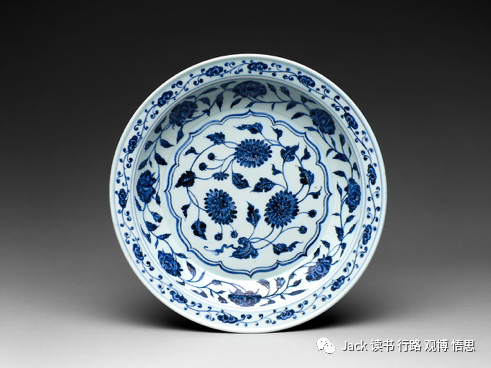
(A porcelain plate with chrysanthemum and peony patterns, from Ming China)
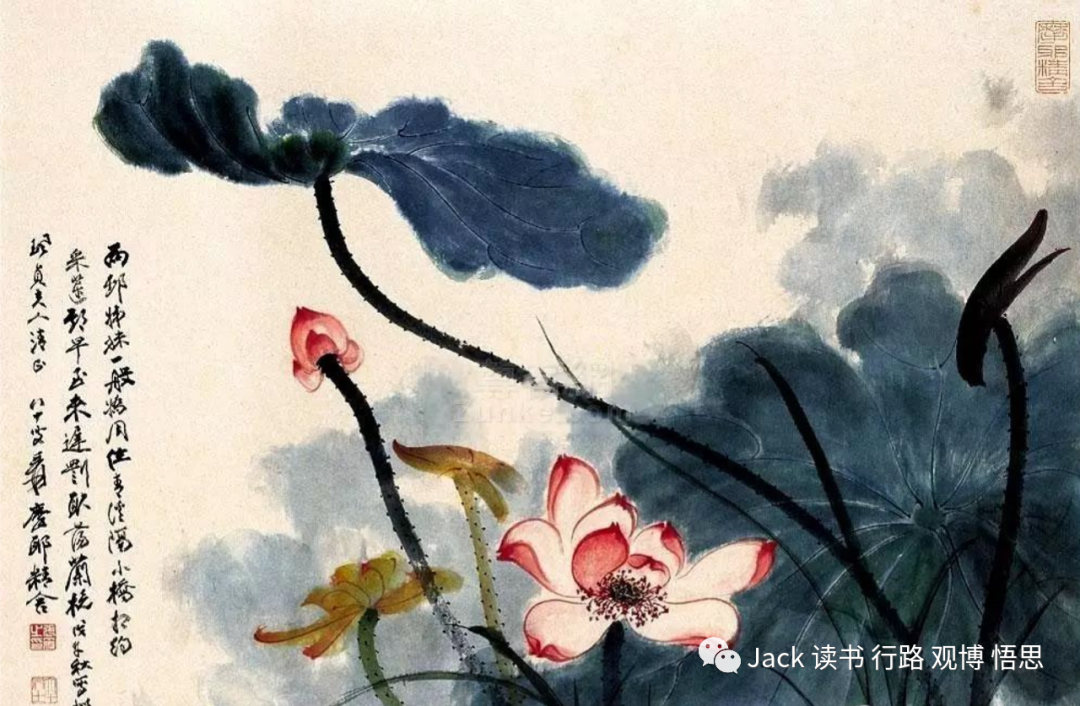
(A lotus-flower painting from China)
Finally, it is pertinent to turn to China. The Chinese culture is rich in symbols that make the culture profuse in values and beliefs. Unlike the Egyptian or Indian cultures, the Chinese culture has been well-preserved and has not suffered many changes or destruction. The ancient Chinese used plant symbolism a lot. For instance, the chrysanthemum is a famous symbol that usually appears on Chinese porcelain and ceramics. The flower belongs to the “Four Gentlemen of Flowers” and symbolizes longevity, and prosperity. The lotus flower, similarly, is a classic Chinese cultural symbol. The lotus flower mainly embodies purity and virtue, as it rises from dark mud and blossoms beautifully.

(The nine-dragon wall in Bei Hai Park, Beijing)
The most renowned symbol of Chinese culture is unquestionably the dragon. The dragon is a being from traditional mythology, and people have hailed it as the defining representation of the Chinese. According to legends, the dragon can embody the qi energy (or life energy), thus symbolizing life and vitality. During the later dynasties, the dragon became the reserved symbol for the Imperial state and appeared almost everywhere in royal palaces, clothing, and various art forms. The Chinese are a perfect example that illustrates how the pulse is the foundation of modern China. When the public sees the symbols above, they associate them with certain aspects of Chinese culture that our ancestors developed hundreds upon thousands of years ago. People are being brought down to the foundational layer and can feel the vibrance and beliefs of Chinese culture that have been present since the dawn of the Chinese civilization. In modern-day China, the chrysanthemum, the lotus flower, and the dragon still symbolize prosperity, purity, and strength. These values and beliefs have been continually meaningful because of the cultural pulse.
Overall, the symbols created in history globally have been generating the pulse of cultures, which pump cultural characteristics, values, and beliefs into history and have been influential even in today’s modern world. From my point of view, the real significance of these symbols in art and design is not only how artistic or how beautifully the production was, but rather their ability to lead us back into the depth of our civilizations and seek out some of the most basic yet imperative components of our cultural identities. One can truly understand what makes us who we are and what shapes how we think about ourselves, nature, and others. In such a forward-going time, when everything seems to be whizzing past us, the symbols become even more valuable as people usually forget the most crucial question about whom we are supposed to be as a civilization and how we believe in specific beliefs or values, or morals. Perhaps, by referring back to the symbols, we can find the answers to these questions by going back in history.
WORKS CITED
“Chinese Symbolism | China Collection.” China.lu, 2021, china.lu/en/symbolism-34. Accessed 16 Oct. 2021.
“SHANKH.” INDIAN CULTURE, 2021, indianculture.gov.in/musical-instruments/sushir-vadya/shankh. Accessed 16 Oct. 2021.
wiseowl themes. “Imagery & Symbolism in Ancient Art | Ancient & Oriental.” Ancient & Oriental, 11 Aug. 2019, www.antiquities.co.uk/blog/imagery-symbolism/. Accessed 16 Oct. 2021.
PICTURES CITED
https://www.metmuseum.org/art/collection/search/550931
https://medusa-art.com/egyptian-recumbent-faience-lion-amulet.html
https://www.britannica.com/topic/scarab
https://www.alamy.com/stock-photo-multicoloured-hindu-om-aum-and-lotus-flower-embroidery-pattern-indian-33995118.html
https://www.metmuseum.org/art/collection/search/503672
https://www.metmuseum.org/art/collection/search/42501
https://www.pinterest.com/kennandsmith/lotus-chinese-painting/
http://www.mafengwo.cn/poi/6627771.html
https://baiyangzuo.xkyn.com/cc/涓轰粈涔堜笘鐣屽崼鐢熺粍缁囩殑鏍囧織鏄%EE%88%99竴鏉¤泧.htm
导读:
世界各地古代艺术和设计中发现的符号可以把人们带回到文化的基础层面,使人们看到每种文化内在的信仰、价值和道德观。它们创造了 "文化的脉搏",将这些信仰、价值观和道德观永久地注入历史。古代埃及、罗马帝国、印度和中国文化中的符号是论证以上观点的完美例证。
人们生活在一个多层次的世界中。今天,随着文明以人类历史上前所未有的速度发展,新的文化元素不断堆积,迅速形成 "文化段层"。新的潮流可以在一个月左右的时间内使旧的潮流过时。但是,在我们文化的这种表面的现代分层之下,存在着一种深层的、有活力的和广阔的元素,一种一直在向人类历史注入每个文化的价值、信仰和道德体系的元素,我把这元素称为 "文化的脉搏"。这个脉搏编织了世界上的各个文化,并成为现代世界的基础。是什么产生了文化的脉搏?其中一个最耐人寻味,但又最主要的因素是古代艺术设计中的符号。它们是一种世界性的现象,并以深不可测的方式影响了文化价值、信仰、美学观念等文化组成部分。作为现代人,通过观察这些符号,人们可以被带回到文化的基层,并理解是什么塑造了我们,以及我们作为一种文化的集体信仰。

(眼镜蛇护身符)
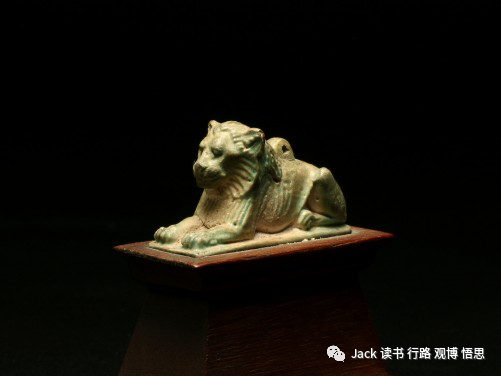
(雄狮护身符)

(甲虫护身符)
古埃及艺术设计中的象征主义是研究几千年前的符号如何创造文化脉搏(在这段指埃及的文化脉搏)的适当起点。在古埃及人的许多文物中发现的符号与他们的文化价值和信仰体系密切相关。以著名的动物护身符为例。护身符是一种生者和死者都会佩戴的装饰品,被认为可以保护人们免受邪恶、危险或疾病的侵害。在古埃及的古王国时期(约公元前2700-2200年),动物形状的护身符通常象征着不同的人类特征或文化价值。例如,眼镜蛇象征着皇家和神圣的力量,这种动物被发现在神和法老的头饰前面。狮子象征着凶猛和勇敢,可以推断它主要由战士佩戴。在中王国时期(约公元前2200-1800年),出现在护身符上的动物通常是神灵的代表。例如,甲壳虫代表太阳神“拉”。而护身符上描绘的许多其他动物则代表其他各类神灵,如荷鲁斯、阿努比斯等,以及其他重要宗教人物。通过他们的护身符,古埃及人能够建立一个令人惊讶的充满活力的多元文化。然而,这些符号不仅体现了他们的文化,而且还使文化变得生动,创造了文化的脉搏。今天,虽然埃及表面上各个方面都不像古王国和中王国时期,但当人们看到护身符时,他们就会被带到了其文化表层之下,到达其文化脉搏。他们被带到了埃及人对艺术、对宗教、对自然、对日常生活的古老、狂热而真实的爱,这种爱是深刻的、有活力的、广阔的、普遍的,至今仍在这片古老的土地上回响。
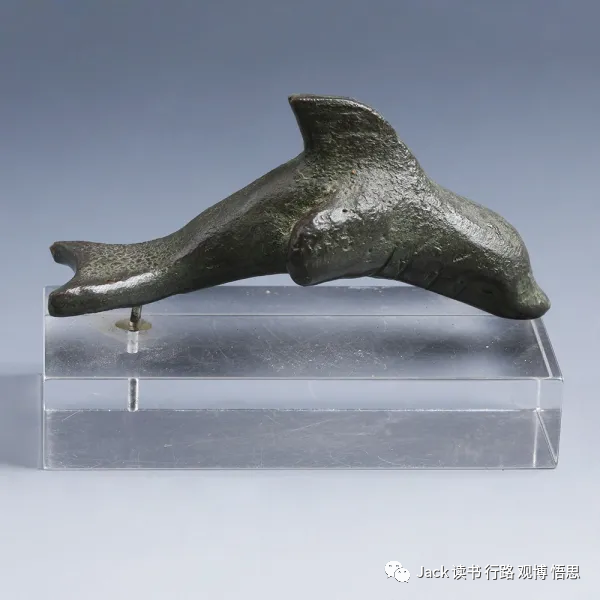
(德尔菲的海豚)

(罗马帝国雄鹰)
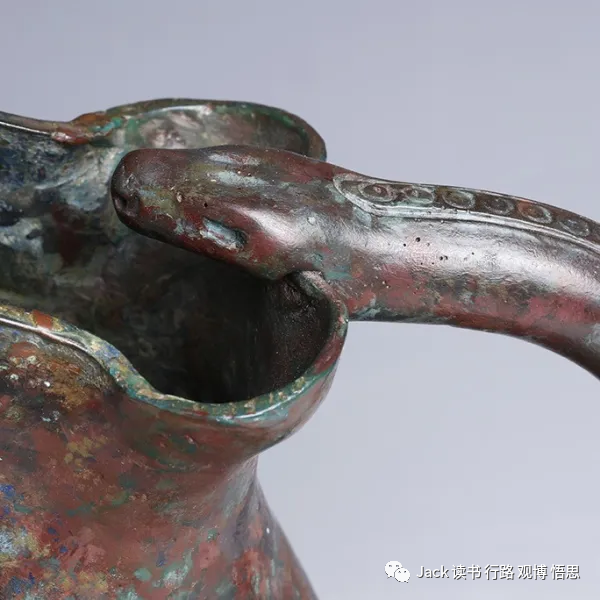
(阿斯克勒庇俄斯之蛇)

(世界卫生组织logo)
由于每一种文化都有脉搏,罗马人也不例外。在现代,大多数人对罗马人的印象是他们巨大的帝国和他们在第三世纪危机后的衰落。然而,罗马人的艺术和设计中的符号与象征主义在塑造他们的文化和创造他们的脉搏方面起到了不可或缺的作用。与古埃及一样,罗马人也喜欢自然,并经常使用动物象征主义来代表他们生活的不同方面。例如,海豚最初象征着德尔菲的神谕(古希腊人认为德尔菲的神庙是在阿波罗化身为海豚帮助建成的),但在更广泛的层面上,对于罗马人来说,它是他们的信仰的缩影,在动物和他们的宗教之间建立了联系。除了海豚,另一个经常出现在罗马艺术和设计中的动物符号是鹰。鹰象征着罗马帝国的权力和威望,并逐渐变成了整个帝国的主要象征,同时,它大量地出现在罗马的各类艺术中。最后,罗马人创造的最著名的动物象征之一是阿斯克勒庇俄斯之蛇。在罗马神话和文化信仰中,阿斯克勒庇俄斯受到蛇的指引,发现了治疗的秘密。蛇象征着治愈,并被暗示会带来好运。罗马帝国不仅在政治和军事上蓬勃发展,在文化上也是如此。通过观察罗马艺术和设计中的动物象征意义,人们可以感受到文化的脉搏,将他们充满活力的文化特征注入历史,并一直流传至今。在今天的西方世界中,美利坚的雄鹰,世卫组织logo上的阿斯克勒庇俄斯之蛇等动物象征仍然保持着2000年前的原始文化意义,一个人也可以通过观察这些文化符号而了解塑造西方文化的初始价值观与宗教信仰。
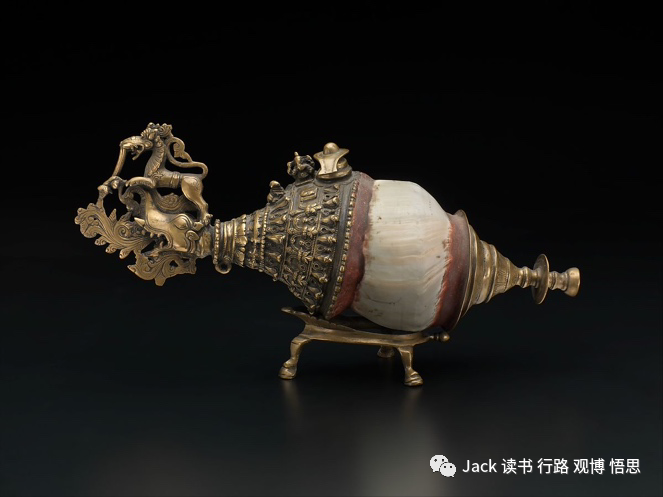
(海螺壳雕刻,印度)
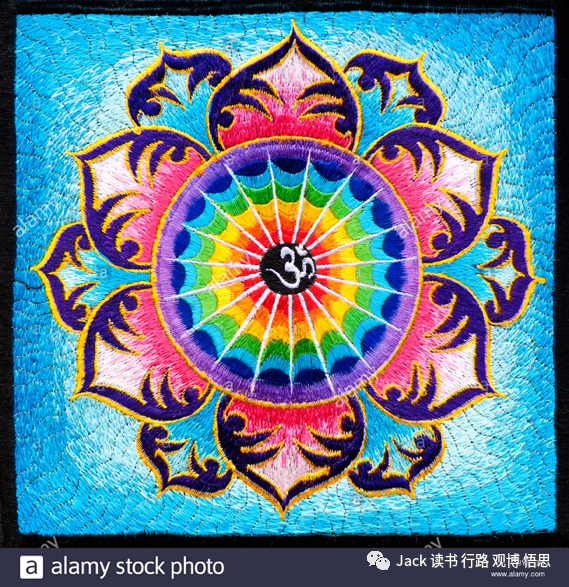
(印度的经典莲花图案)

(明代的展示菊花图案的陶瓷盘)

(中国传统荷花画作)
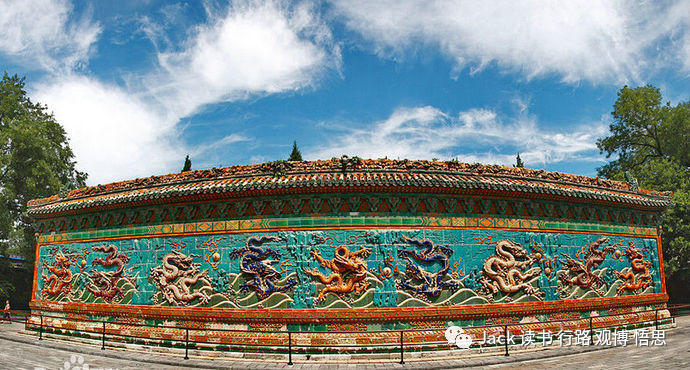
(北海的九龙壁)
- 本文标签: 原创
- 本文链接: http://www.jack-utopia.cn//article/429
- 版权声明: 本文由Jack原创发布,转载请遵循《署名-非商业性使用-相同方式共享 4.0 国际 (CC BY-NC-SA 4.0)》许可协议授权
